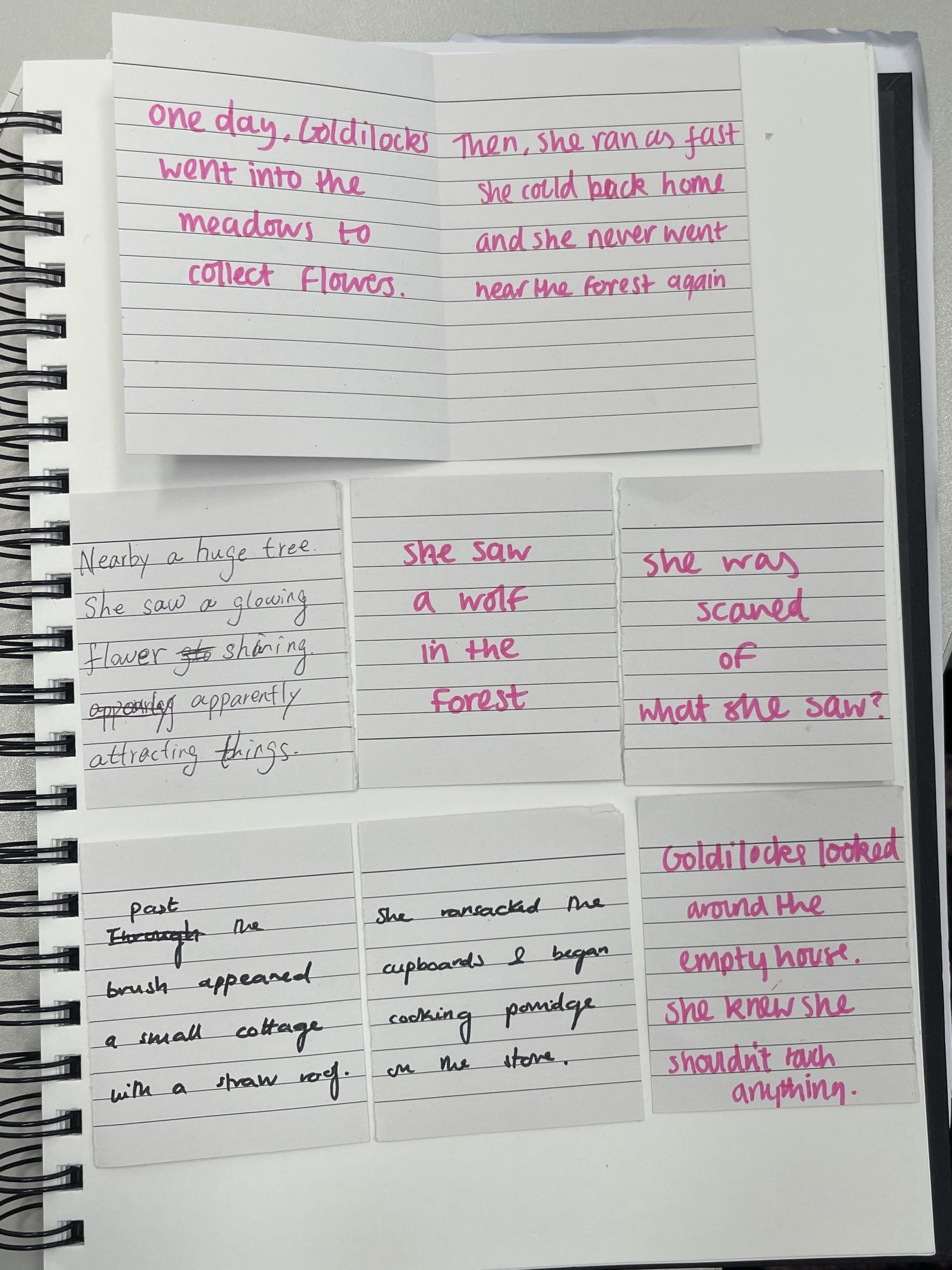To start the week off, we did a narrative based exercise: making a comprehensible story from five prompt cards, which we also did in year 1.

We were given the start and end sentence of the Adam and Eve story and tasked with putting randomly chosen sentences in an order that would make sense. After, we had to make our own using a known backstory (e.g. Little Red Riding Hood, Vampires, etc.). My group and I chose Goldilocks and the Three Bears. We wrote out our prompts which also included a twist to make the narrative a little more exciting, and then rearranged it.

Creating a Murder Mystery Game
For our lecture on Thursday, we had a visit from Amber Boothe from Nobody’s Fool Mystery Games. She went over the elements that make up an effective narrative as well as compelling characters.
The Main Elements of a Murder Mystery:
- Concept
- Premise
- Characters
- Logic
Concept:
What your murder mystery game is about and the demographic.
A murder mystery game inspired by X for Y players.
Premise:
Set up: Characters are at a location because…
Twist: X is actually Y (distinct from the murderer’s plot line)
Characters:
Essential Characters:
- Victim (NPC)
- Secondary Victims (NPC) – the motive for murder (e.g. people, animals, or concepts (a successful career))
- Mastermind – architect of the twist
- Murderer – person with means, motive and opportunity
Supporting Characters:
They corroborate key info about the Victim, Mastermind and Murderer.
- Lover – agent of chaos motivated love, lust or obsession
- Fool – clumsily or carelessly wreaks havoc
Other Utility Characters:
- Blackmailers
- Assassins
- Merchants
- Amnesiacs
- Innocent Witnesses
Rules to Keep in Mind:
- Clear up the logic
- Red herrings are annoying – make them actually come back around and link to the plot.
- People expect murder, not tragedy so try to avoid triggering topics.
- Expect players to arrive unprepared (give them the gist in under five mins).
- PLAYTEST
- Tell players what they don’t know
Reply